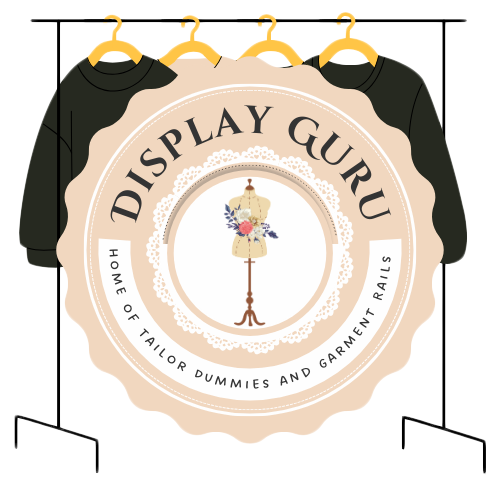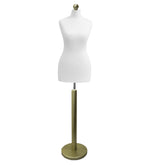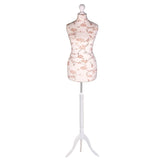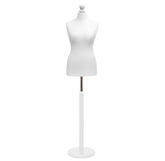9 Captivating Window Display Ideas for Retail Success
Your storefront window is more than just glass and frames; it's the most powerful, round-the-clock marketing tool you possess. It’s a silent salesperson, a visual handshake that can entice a casual passerby to become a loyal customer. In a crowded retail landscape, a compelling window display does the heavy lifting, communicating your brand’s identity, showcasing your best products, and creating a narrative that sparks curiosity and desire. A strategically designed window doesn't just display items; it creates an experience.
This guide moves beyond generic advice to provide actionable, professional strategies for creating impactful visual merchandising. We will explore nine distinct and powerful window display ideas, delving into concepts ranging from immersive storytelling and interactive technology to minimalist elegance and kinetic movement. For each concept, we offer practical tips and real-world examples to help you transform your window into a customer-attracting magnet.
Throughout this curated collection, we will also highlight how foundational tools, such as professional mannequins and sturdy garment rails, are essential for executing these visions with polish and precision. Whether you are a fashion designer, a retail owner, or a visual merchandiser, these concepts are designed to inspire and equip you to capture attention and drive footfall.
1. Seasonal Theme Displays: Capturing the Moment
Seasonal displays are a classic yet powerful approach in visual merchandising, aligning your shop's aesthetic with the calendar to evoke timely emotions and drive relevant purchases. This strategy involves creating window displays that reflect the current season, a specific holiday, or even a local festival, making your storefront feel current, engaging, and in tune with the customer’s mindset.
By tapping into shared cultural moments, from the vibrant renewal of spring to the festive cheer of Christmas, you create an immediate connection with passers-by. These displays are not just decorative; they are strategic storytelling tools that guide consumer behaviour by showcasing season-appropriate merchandise.
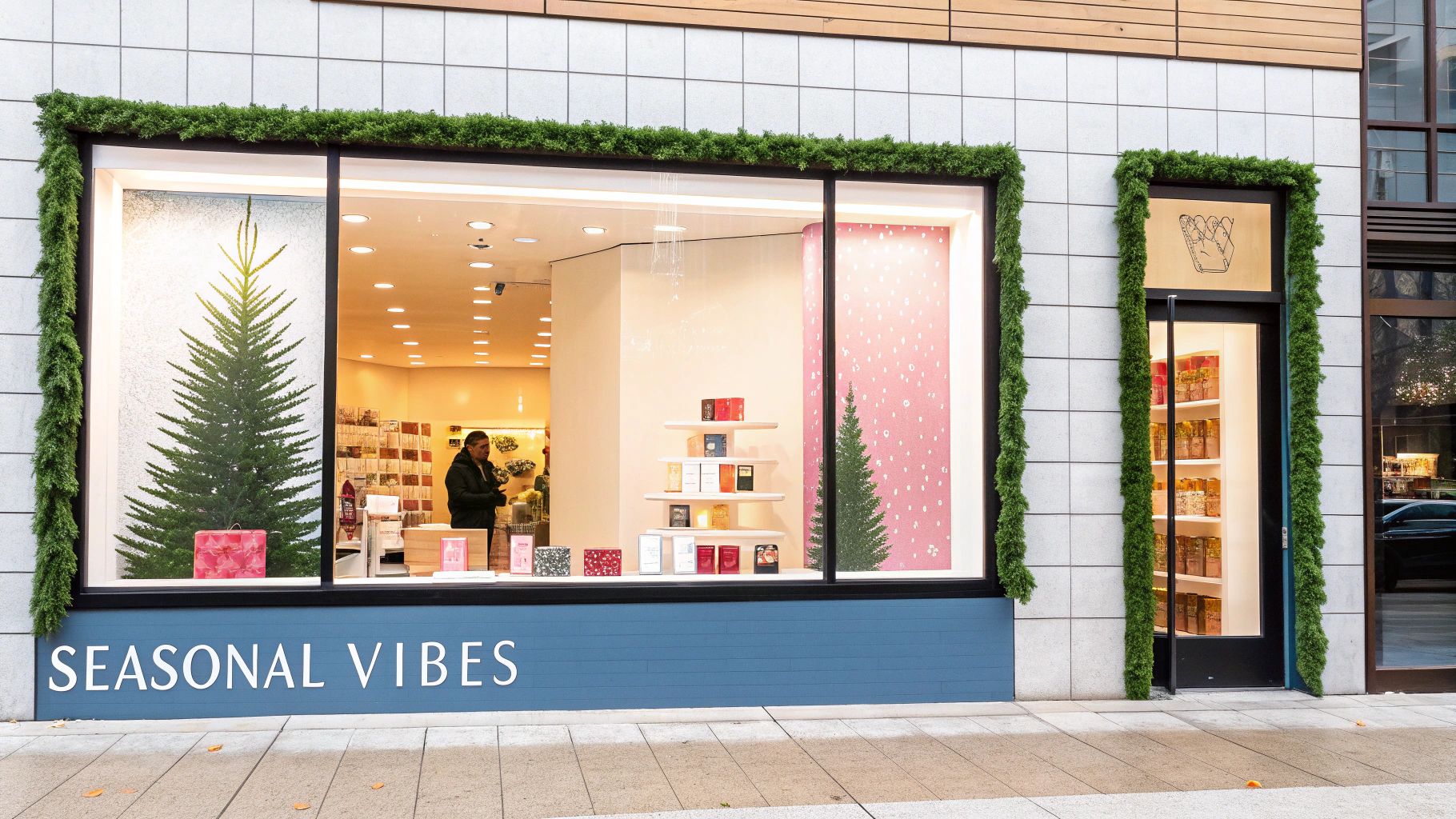
Why This Approach Works
Seasonal themes are effective because they leverage pre-existing excitement and anticipation. Customers are already thinking about upcoming holidays or seasonal changes, making them more receptive to related products and promotions. Iconic examples include the magical Christmas windows of Harrods in London or the elegant Valentine's Day displays at Tiffany & Co., which have become destinations in their own right.
Key Insight: A well-executed seasonal display transforms your window from a simple product showcase into a cultural touchpoint, generating buzz and footfall.
Implementation Tips for Seasonal Success
To maximise impact, meticulous planning and creative execution are essential.
- Plan Ahead: Begin conceptualising your displays at least two to three months in advance. This allows ample time for sourcing props, finalising designs, and coordinating stock.
- Invest in Versatility: Purchase high-quality, adaptable props like neutral-coloured mannequins, adjustable lighting, and modular display stands that can be repurposed across different seasonal themes, saving costs over time.
- Embrace Local Culture: Look beyond major holidays. Incorporate local events, such as a town fair or a regional celebration, to create a unique display that resonates deeply with the community.
- Use Strategic Lighting: Alter your lighting to enhance the seasonal mood. Use warm, soft lighting for an autumnal, cosy feel, or bright, crisp lights to evoke a fresh spring morning. For more in-depth techniques, exploring professional visual merchandising guidelines can provide valuable insights.
2. Interactive Technology Displays: Engaging the Digital Native
Interactive technology displays merge the physical and digital worlds, transforming your shop window into a dynamic and engaging experience. This modern approach utilises elements like digital screens, touchscreen interfaces, augmented reality (AR), and motion sensors to captivate passers-by, inviting them to interact directly with your brand before they even step inside.
By integrating technology, you move beyond passive viewing and create a memorable, hands-on encounter. This is one of the most forward-thinking window display ideas, signalling that your brand is innovative and in tune with the digitally-savvy consumer. It blurs the line between online and offline retail, offering a unique draw that static displays cannot match.
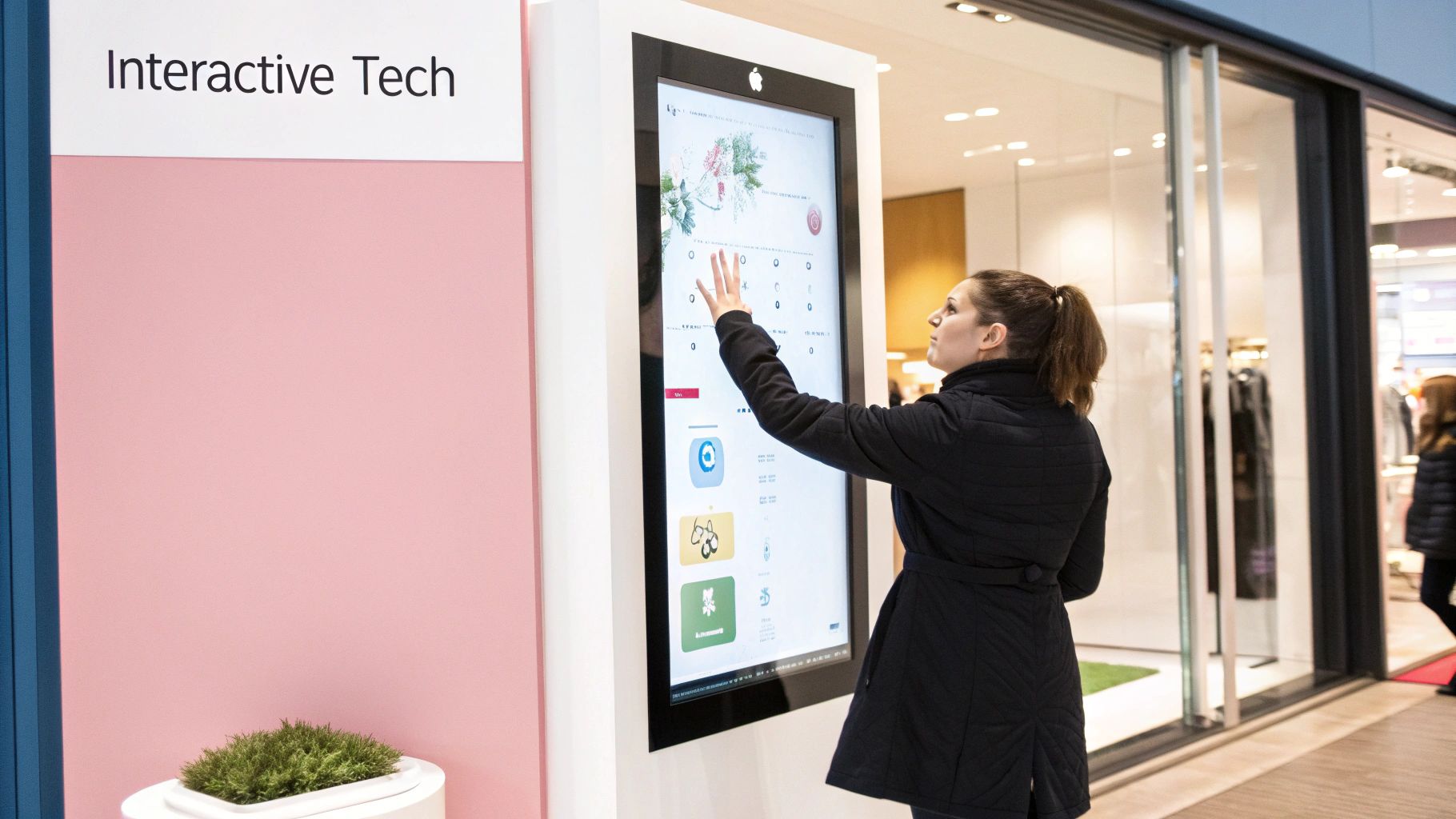
Why This Approach Works
Interactive displays are highly effective because they leverage curiosity and the human desire for engagement. They create a novel experience that generates buzz and encourages social sharing. For example, Adidas's augmented reality window allowed shoppers to virtually 'try on' trainers using their smartphones, while Burberry famously live-streamed runway shows in its windows, connecting global fashion events directly to the high street. These displays turn pedestrians into active participants.
Key Insight: Technology-driven windows stop traffic by offering an experience, not just a product view, making your storefront a destination and a conversation starter.
Implementation Tips for Tech-Forward Success
A successful interactive display requires careful planning to ensure it is both impressive and user-friendly.
- Prioritise Intuitive Design: Ensure the technology is simple and straightforward to use. If shoppers can't figure it out in seconds, they will walk away. Provide clear, concise instructions on-screen or on the glass.
- Plan for Contingencies: Technology can fail. Have a backup plan, such as a default static digital image or a designated support contact, to handle any technical glitches swiftly and maintain a professional appearance.
- Ensure Good Visibility: Design your digital content to be clearly visible in various lighting conditions, from bright daylight to evening darkness. Anti-glare screens and high-contrast visuals are essential.
- Maintain and Update: Keep the software and content fresh. Regular updates prevent the experience from becoming dated and ensure the system remains secure and functional. This is a crucial step often detailed in professional retail technology integration guides.
3. Storytelling and Narrative Displays
Storytelling and narrative displays transform your window from a static product arrangement into a captivating scene, telling a complete story that engages viewers on an emotional level. This sophisticated approach uses carefully arranged props, characters, and progressive elements to guide the viewer through a narrative journey, creating a memorable experience that connects deeply with your brand's identity and the lifestyle it represents.
By weaving a story, you invite passers-by to pause and decipher the scene, fostering a longer, more meaningful interaction. These are not just window display ideas; they are miniature theatrical productions designed to evoke curiosity, aspiration, or nostalgia, with your products playing a central role in the plot.
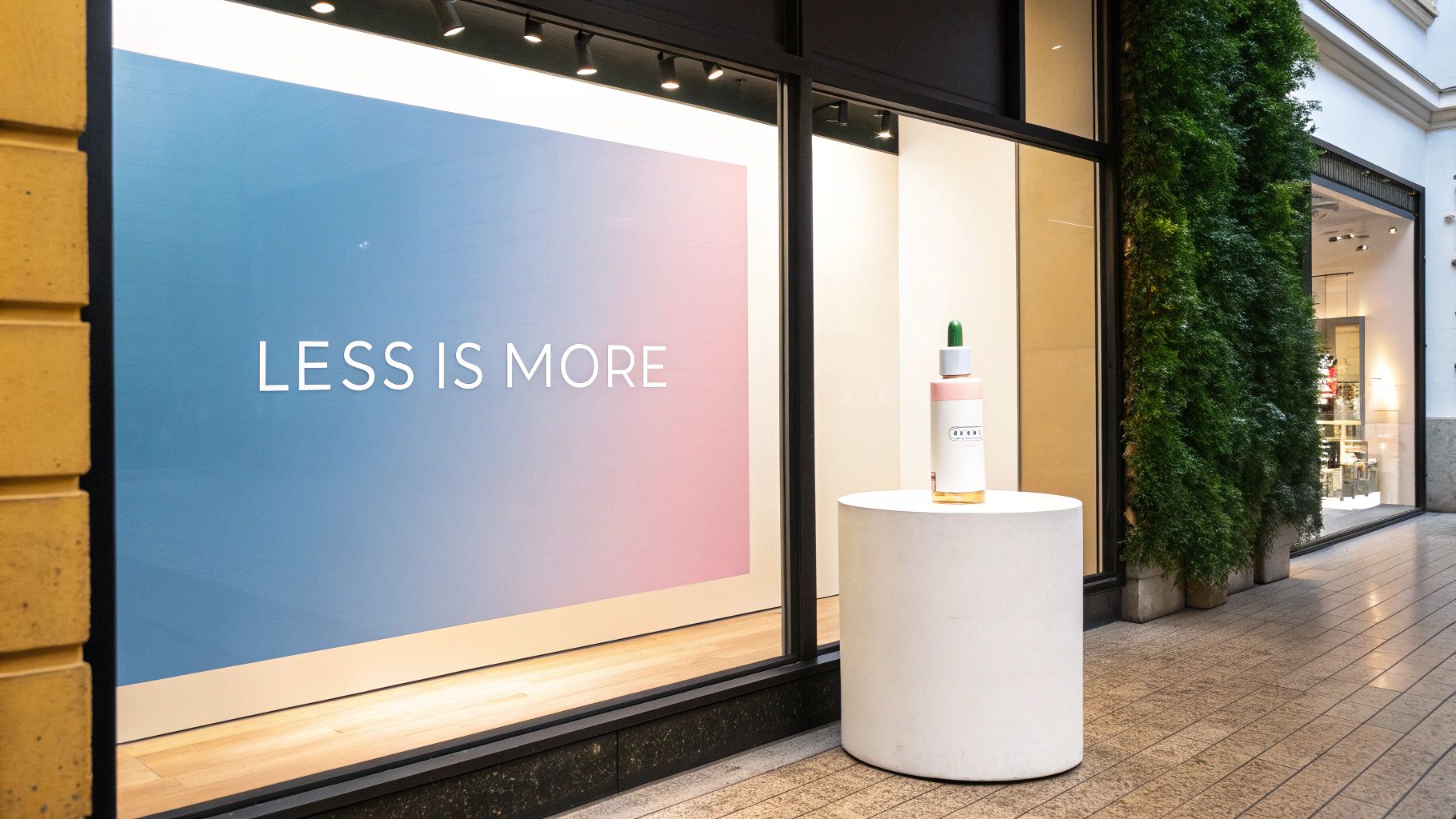
Why This Approach Works
Narrative displays are powerful because they appeal to the human fascination with stories. A compelling narrative can make products more desirable by placing them within an aspirational or relatable context. Iconic examples include the whimsical, often surreal, fairy tale windows of Hermès or the artist-led narrative collaborations at the former Barneys New York, which turned their windows into celebrated art installations. These displays build brand prestige and generate significant public interest.
Key Insight: A narrative-driven window display elevates your brand beyond commerce, positioning it as a curator of experiences and culture.
Implementation Tips for Narrative Success
Creating a successful story-based display requires a clear vision and strategic execution.
- Keep the Story Simple: Your narrative should be instantly understandable. Aim for a clear, concise plot that can be grasped in a few seconds, even by someone quickly walking past.
- Align with Brand Values: Ensure the story you tell is a natural extension of your brand's identity. A luxury brand might tell a story of elegance and adventure, while a community-focused shop could depict a local tale.
- Use Lighting as a Guide: Employ strategic lighting to direct the viewer’s eye through the narrative. Spotlight key characters, products, or moments in the story to control the flow and build atmosphere.
- Integrate Products Subtly: Products should feel like essential, organic parts of the story, not forced advertisements. They can be props used by characters or objects that drive the plot forward.
4. Minimalist and Clean Displays: The Power of Simplicity
In an age of sensory overload, a minimalist window display can offer a powerful moment of calm and focus. This approach embraces simplicity, using negative space, clean lines, and a restrained colour palette to create a sophisticated, uncluttered presentation. The goal is to strip away distractions, allowing the featured products to command full attention and communicate quality through elegant restraint.
This strategy is particularly effective for brands that wish to convey luxury, modernity, and a strong design ethos. By focusing on precision and purpose, a minimalist window transforms into a curated gallery space where the product is the undisputed hero.
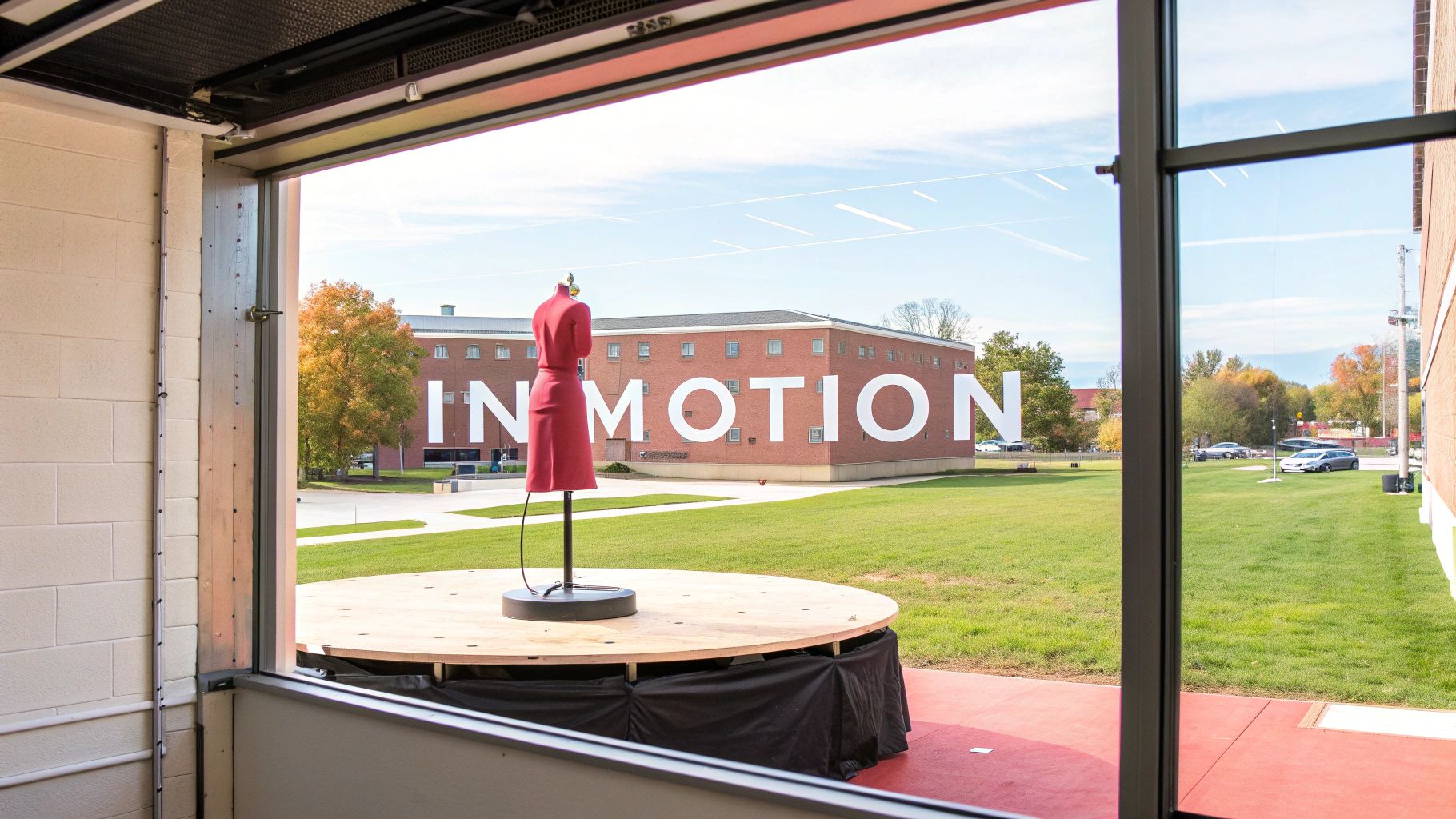
Why This Approach Works
Minimalism works by creating visual intrigue through what isn't there. The strategic use of empty space draws the eye directly to the product, encouraging closer inspection and appreciation of its form, texture, and craftsmanship. Brands like Apple, COS, and Muji have perfected this, turning their windows into powerful statements of their brand identity without shouting. Their displays are confident, serene, and instantly recognisable.
Key Insight: A minimalist display communicates confidence in your product's inherent value, suggesting it needs no elaborate backdrop to prove its worth.
Implementation Tips for Minimalist Mastery
Achieving impactful minimalism requires discipline and an uncompromising eye for detail. It is far more than just placing a single item in an empty window.
- Prioritise Premium Materials: Use high-quality materials for your few chosen props and backdrops. A flawless marble plinth or a single sheet of brushed metal communicates luxury more effectively than a dozen cheaper props.
- Focus on Flawless Lighting: Lighting is paramount. Use strategically placed spotlights to sculpt the product, create subtle shadows, and guide the viewer's focus. Precision here is non-negotiable.
- Maintain Impeccable Cleanliness: Every surface, from the glass to the display stands, must be pristine. Dust, smudges, or imperfections will shatter the illusion of effortless sophistication.
- Enforce Strict Colour Discipline: Limit your palette to two or three complementary or monochromatic colours to maintain a cohesive and calm aesthetic. Exploring different retail display solutions can help you find fixtures that align with this principle.
5. Product Demonstration Displays: Showing, Not Just Telling
Product demonstration displays shift the focus from static presentation to dynamic education. This powerful strategy involves showcasing your products in action, demonstrating their functionality, benefits, and real-world applications. By showing how an item works, you answer potential customer questions before they are even asked, building confidence and illustrating value in a tangible way.
This approach transforms your window into an interactive or educational stage, whether through live demonstrations, looping video content, or clever mechanical setups. It’s an effective method for complex, innovative, or high-value products where understanding the "how" and "why" is crucial to the purchase decision. This is one of the most engaging window display ideas for capturing and holding attention.
Why This Approach Works
Demonstration displays are highly effective because they educate and entertain simultaneously, breaking down purchase barriers like uncertainty or intimidation. Seeing a product in use removes guesswork and allows customers to visualise themselves using it. Famous examples include Williams Sonoma’s live cooking demonstrations that fill the air with enticing aromas, or Sephora’s video screens showing makeup application techniques, which demystify products for consumers.
Key Insight: Demonstrating a product's value in a clear, compelling way builds immediate trust and can significantly shorten the customer's journey from interest to purchase.
Implementation Tips for Demonstration Success
A successful demonstration display must be clear, concise, and compelling.
- Focus on Key Benefits: Don't try to show everything. Isolate one or two primary benefits or features of the product and build your demonstration around them for maximum clarity and impact.
- Keep it Simple: Ensure the demonstration is easy to understand in seconds. Use clear, simple steps, bold text, or straightforward video visuals to explain the process.
- Ensure Visibility: Use strong lighting and position key elements at eye level. If using a video screen, ensure it's bright enough to be seen in daylight. Strategic use of high-quality retail display stands can help elevate products for better viewing.
- Rotate Content: Keep your display fresh by regularly rotating the products being demonstrated. This encourages repeat viewing from regular passers-by and allows you to highlight a wider range of your inventory over time.
6. Colour-Coordinated Theme Displays: Creating Visual Harmony
Colour-coordinated displays are a powerful visual merchandising technique that uses a specific colour palette to create a striking, cohesive, and memorable window. This approach centres on building a display around a single dominant colour (monochromatic) or a carefully selected scheme, using various shades, tints, and textures to add depth and sophistication. It’s an effective way to evoke a specific mood, reinforce brand identity, and make products pop.
By focusing on colour, you create an immediate and powerful visual impact that can stop passers-by in their tracks. This strategy is less about a narrative and more about creating a strong aesthetic statement. It directs the customer's eye and makes the featured merchandise the undeniable hero of the display, all while communicating a sense of elegance and deliberate design.
Why This Approach Works
The power of colour-coordination lies in its psychological impact and its ability to simplify the visual field. Brands like Tiffany & Co., with its iconic robin's-egg blue, and Hermès, with its signature orange, have built global recognition around a single colour. These brands demonstrate how a consistent colour theme can become synonymous with luxury, quality, and identity. A monochromatic or harmonised colour display feels intentional, organised, and highly curated, elevating the perceived value of the products within it.
Key Insight: A focused colour strategy transforms your window into a bold statement piece, strengthening brand recall and creating an impactful visual experience.
Implementation Tips for Colour Success
Executing a colour-themed display requires precision and a good eye for detail.
- Play with Textures: To prevent a monochromatic display from looking flat, incorporate a variety of textures. Mix materials like silk, wool, metal, and wood within the same colour family to create visual interest and depth.
- Use Strategic Lighting: Lighting is crucial for enhancing colour. Use focused spotlights to highlight different shades or create shadows that add dimension. Warm or cool lighting can dramatically alter the mood of the colour palette.
- Introduce a Subtle Accent: For a dynamic twist, introduce a single, small accent colour. A splash of contrasting colour can draw attention to a key product without disrupting the overall harmony of the display.
- Consider Colour Psychology: Be mindful of the cultural and emotional associations of your chosen colours. Red can signify passion or sales, while blue often conveys trust and calmness. Align your colour choice with the message you want to send.
7. Artistic and Gallery-Style Displays: Elevating Product as Art
Transforming your window into a high-concept art gallery is one of the most sophisticated window display ideas available to retailers. This approach elevates products beyond mere commercial items, presenting them as curated objects within an artistic installation. It involves collaborating with artists, creating abstract sculptures, or using avant-garde concepts to tell a compelling brand story.
This strategy positions your brand as a cultural tastemaker, not just a seller of goods. By treating the window as a canvas, you create a destination that sparks conversation, attracts media attention, and forges a deep, intellectual connection with your audience. The goal is to make passers-by stop, think, and see your products in an entirely new light.
Why This Approach Works
Gallery-style displays are effective because they tap into the allure of exclusivity and creativity, generating intrigue that transcends typical retail marketing. They create a memorable experience that feels premium and thought-provoking. Iconic examples include Louis Vuitton’s long-standing collaborations with artists like Yayoi Kusama and the conceptually driven windows of the now-closed but legendary Parisian boutique, Colette, which often blurred the lines between retail and contemporary art.
Key Insight: An artistic display communicates brand confidence and cultural relevance, attracting a discerning customer who values creativity and originality.
Implementation Tips for Artistic Success
Executing a gallery-style window requires a fine balance between artistic expression and commercial purpose.
- Choose Aligned Artists: Partner with local or established artists whose style and values resonate with your brand identity. The collaboration should feel authentic, not forced.
- Balance Art and Commerce: Ensure the artistic concept enhances, rather than obscures, the featured products. The installation should draw the eye towards the merchandise, making it the hero of the composition.
- Provide Context: Include a small plaque or vinyl text explaining the concept and crediting the artist. This adds a layer of storytelling and shows respect for the creative partnership. This approach aligns well with creating inclusive narratives, similar to how retailers can learn more about how plus-size mannequins create stylish, inclusive displays.
- Document and Promote: These displays are highly photogenic. Professionally document the window and share it across social media, press releases, and your brand portfolio to maximise its reach and impact long after the installation is gone.
8. Lifestyle and Aspirational Displays: Selling a Vision
Lifestyle and aspirational displays move beyond showcasing individual products to selling a complete, desirable vision. This powerful merchandising technique creates curated scenes that show how your products fit into an idealised daily life, helping customers visualise themselves living that life. It’s about creating a narrative, not just a product arrangement.
Instead of simply placing a dress on a mannequin, you create a whole scenario around it: a bohemian living room, a chic home office, or a preppy weekend getaway. This approach, popularised by brands like Anthropologie and Ralph Lauren, connects products to emotions, aspirations, and identity, making them far more compelling than they would be in isolation.
Why This Approach Works
This strategy is effective because it taps into the fundamental human desire for a better, more stylish, or more organised life. Customers don't just buy a sofa; they buy the idea of a cosy family evening. They don't just buy a suit; they buy the confidence and success it represents. By presenting a complete, achievable lifestyle, you make the purchase feel like a step towards that aspiration.
Key Insight: An aspirational display transforms your products from mere objects into essential components of a customer's desired lifestyle, boosting their perceived value.
Implementation Tips for Aspirational Success
Crafting a believable and enticing lifestyle scene requires careful thought and an understanding of your target customer.
- Research Customer Aspirations: Understand the lifestyles your target audience admires. Use social media, magazines, and customer feedback to identify key trends and aesthetic preferences.
- Show Products in Context: Display items as they would be used in a realistic setting. A well-placed book and a coffee cup next to a new armchair, for instance, make the scene relatable and inviting.
- Keep it Achievable: While the scene should be aspirational, it must also feel attainable. Overly extravagant or unrealistic displays can alienate customers. The goal is to inspire, not intimidate.
- Use Versatile Fixtures: Build your scene around core fixtures that can be adapted to different themes. For example, a high-quality portable clothing rack can be used to suggest a walk-in wardrobe in one display and a pop-up boutique in another.
9. Movement and Kinetic Displays: Creating Dynamic Attraction
In a bustling street scene, the human eye is naturally drawn to motion. Movement and kinetic displays leverage this instinct by incorporating dynamic elements-from rotating platforms and animated figures to kinetic sculptures-to create an unmissable spectacle. This approach transforms a static window into a living, breathing performance that captivates passers-by and holds their attention far longer than a traditional display.
These animated scenes are powerful storytelling tools, perfect for showcasing multiple angles of a product or creating a narrative that unfolds over time. By introducing controlled movement, you add a layer of sophistication and entertainment, turning your window into a memorable visual experience. Iconic examples include Harvey Nichols' rotating fashion displays and the elaborate mechanical holiday scenes at Galeries Lafayette, which have become celebrated urban attractions.
Why This Approach Works
Kinetic displays cut through visual clutter by creating an element of surprise and intrigue. The motion not only grabs initial attention but also encourages viewers to stop and watch, increasing engagement and the likelihood they will remember the brand. The aural component of quiet, rhythmic movement can also be incredibly alluring, adding another sensory dimension to the experience.
Key Insight: Motion transforms the passer-by from a passive observer into an engaged audience member, dramatically boosting brand recall and footfall.
Implementation Tips for Kinetic Success
Successfully integrating movement requires a balance of creativity and technical precision.
- Prioritise Subtlety: Ensure the movement enhances the product rather than overshadowing it. A slow, elegant rotation of a mannequin or a gentle sway of suspended fabric is often more effective than rapid, distracting motion.
- Invest in Reliability: Use high-quality, quiet motors and mechanisms to avoid breakdowns and disruptive noise. Plan for regular mechanical maintenance to ensure smooth, continuous operation, especially for long-running displays.
- Vary the Motion: Create more sophisticated visual interest by programming varied movement patterns. For example, a display could feature elements that move intermittently or at different speeds, creating a more complex and engaging rhythm.
- Plan for Safety: Ensure all moving parts are securely installed and operate safely. It is wise to include a manual override or emergency stop option, particularly for complex or heavy automated systems.
Window Display Ideas Comparison Matrix
| Display Type | Implementation Complexity 🔄 | Resource Requirements 🔄 | Expected Outcomes ⭐📊 | Ideal Use Cases 💡 | Key Advantages ⚡📊 |
|---|---|---|---|---|---|
| Seasonal Theme Displays | Medium (Regular changes) | Moderate (Props, frequent updates) | Timely relevance, increased foot traffic | Seasonal promotions, holidays, cultural events | Builds emotional connection, urgency |
| Interactive Technology Displays | High (Tech integration & upkeep) | High (Hardware, software, maintenance) | High engagement, measurable data | Tech-savvy shoppers, viral marketing | Real-time updates, 24/7 interaction |
| Storytelling and Narrative Displays | High (Complex planning & design) | High (Creative expertise, production) | Deep emotional engagement, brand identity | Brand differentiation, emotional connection | Longer viewing times, word-of-mouth |
| Minimalist and Clean Displays | Low-Medium (Simple setup) | Low (Focus on quality materials) | Elegant aesthetic, product spotlight | Luxury, tech products, contemporary fashion | Timeless style, cost-effective upkeep |
| Product Demonstration Displays | Medium-High (Live/tech demos) | Medium-High (Staff/tech investment) | Improved product understanding, reduced hesitation | Complex or new products | Builds confidence, supports sales |
| Color-Coordinated Theme Displays | Medium (Color planning & styling) | Medium (Props and materials) | Strong visual impact, trend awareness | Trend-driven promotions, fashion, brands emphasizing color | Easy to share visually, coordinates purchases |
| Artistic and Gallery-Style Displays | High (Art collaborations & curation) | High (Artist fees, production) | Media attention, cultural brand image | High-end brands, cultural engagement | Unique differentiation, art-community support |
| Lifestyle and Aspirational Displays | Medium-High (Scene building) | Medium-High (Props, styling) | Emotional product association, increased sales | Aspirational brand positioning, cross-selling | Supports visualization, emotional appeal |
| Movement and Kinetic Displays | High (Mechanical complexity) | High (Motors, maintenance, energy) | Eye-catching, memorable visuals | High-traffic locations, brand impact | Attracts attention, dynamic social content |
From Idea to Impact: Activating Your Storefront
Throughout this article, we have explored a dynamic spectrum of window display ideas, each offering a unique pathway to capture attention and communicate your brand's essence. From the immersive power of storytelling and the crisp sophistication of minimalism to the captivating allure of kinetic motion, the common thread is clear: your shop window is far more than just glass and space. It is your most powerful, silent salesperson, a three-dimensional billboard with the potential to stop passersby in their tracks and convert curiosity into custom.
The journey from a conceptual idea to a high-impact display is one of strategy and thoughtful execution. The most memorable windows are not merely decorative; they are intentional. They understand their audience, reflect the brand's core values, and create a seamless transition from the street to the interior of your shop. A stunning interactive display loses its magic if it leads to a cluttered, disorganised store. Similarly, an aspirational lifestyle scene sets an expectation that the in-store experience must uphold.
Key Principles for Success
To transform these concepts into reality, it's crucial to ground your creativity in a solid, strategic framework. Remember these foundational takeaways as you begin planning your next display:
- Brand Cohesion: Your window display must be a true extension of your brand identity. Whether you opt for a vibrant, colour-coordinated theme or an artistic, gallery-style installation, it must feel authentic to what customers will find inside.
- Strategic Planning: Don't leave your most valuable retail real estate to chance. Begin with a clear objective. Are you aiming to drive footfall, highlight a new collection, promote a sale, or simply build brand awareness? Your goal will dictate your creative direction.
- The Power of Quality: The structural integrity of your display is paramount. A wobbly mannequin, a sagging garment rail, or a poorly lit product can instantly undermine even the most brilliant creative concept. Professionalism is perceived in the details.
Your Actionable Next Steps
Feeling inspired is the first step; taking action is what generates results. Begin by auditing your current storefront. What story is it telling? Does it align with your business goals?
Next, select one or two window display ideas from our list that genuinely resonate with your brand and target audience. Start small if you need to. A simple, well-executed minimalist display can often have more impact than a complex, poorly realised narrative scene. Sketch out your vision, list the props and products you will need, and establish a clear timeline for installation and removal. The secret to consistently brilliant windows is creating a sustainable and repeatable creative process. This strategic approach ensures your storefront remains a vibrant, compelling, and effective asset for your business, turning casual glances into loyal customers.
Ready to bring your visionary window display ideas to life with professional polish? The foundation of every great display is quality equipment. Explore the extensive range of professional tailor's dummies, durable garment rails, and versatile display solutions at Display Guru to ensure your creations are supported by the best in the industry. Visit Display Guru to find the perfect tools to build your next masterpiece.
